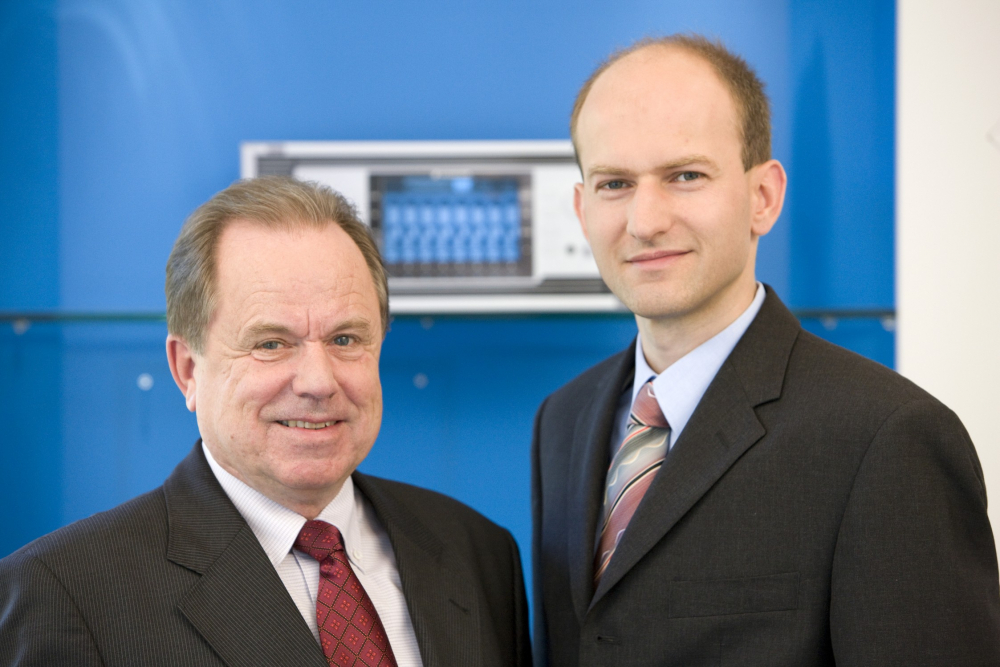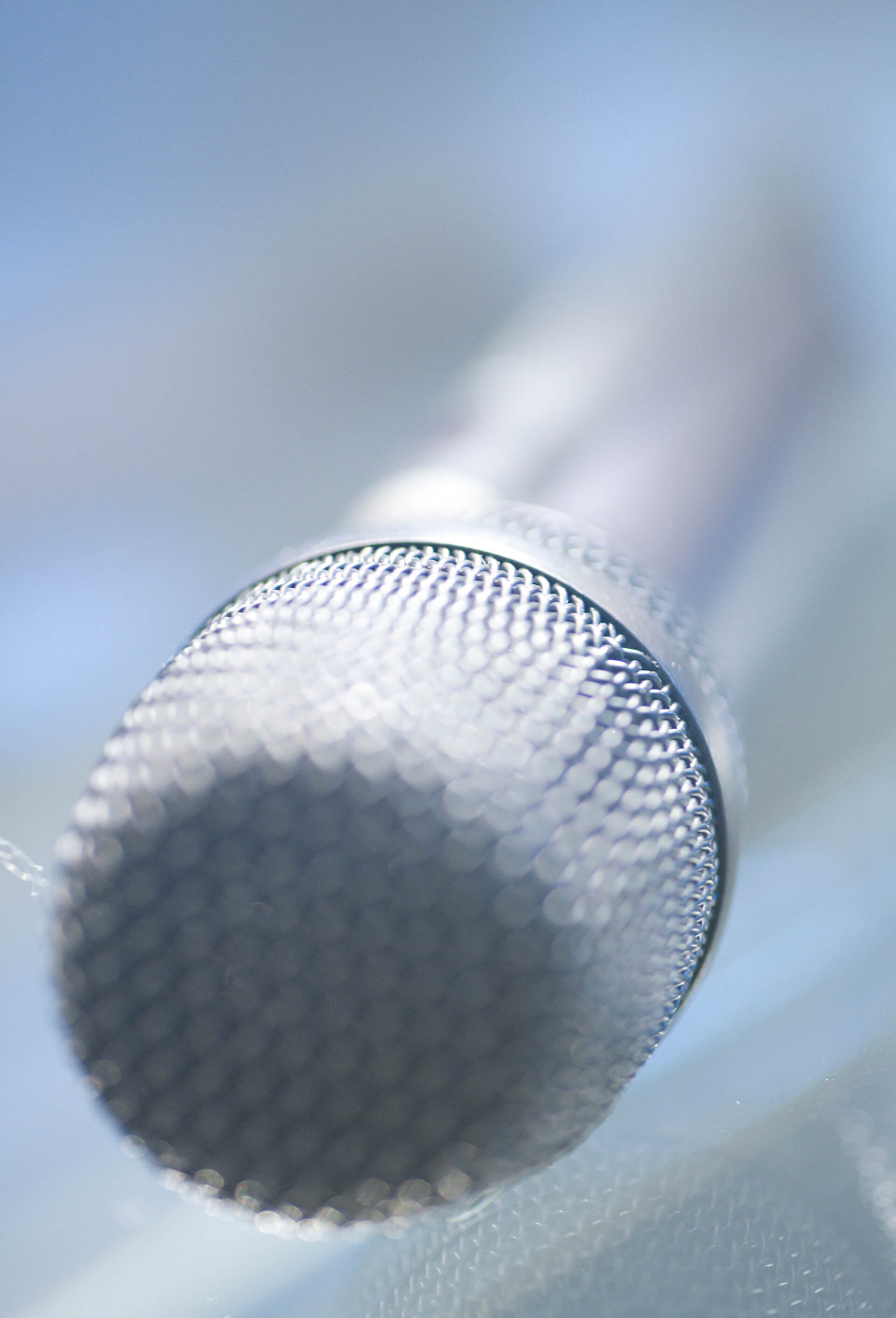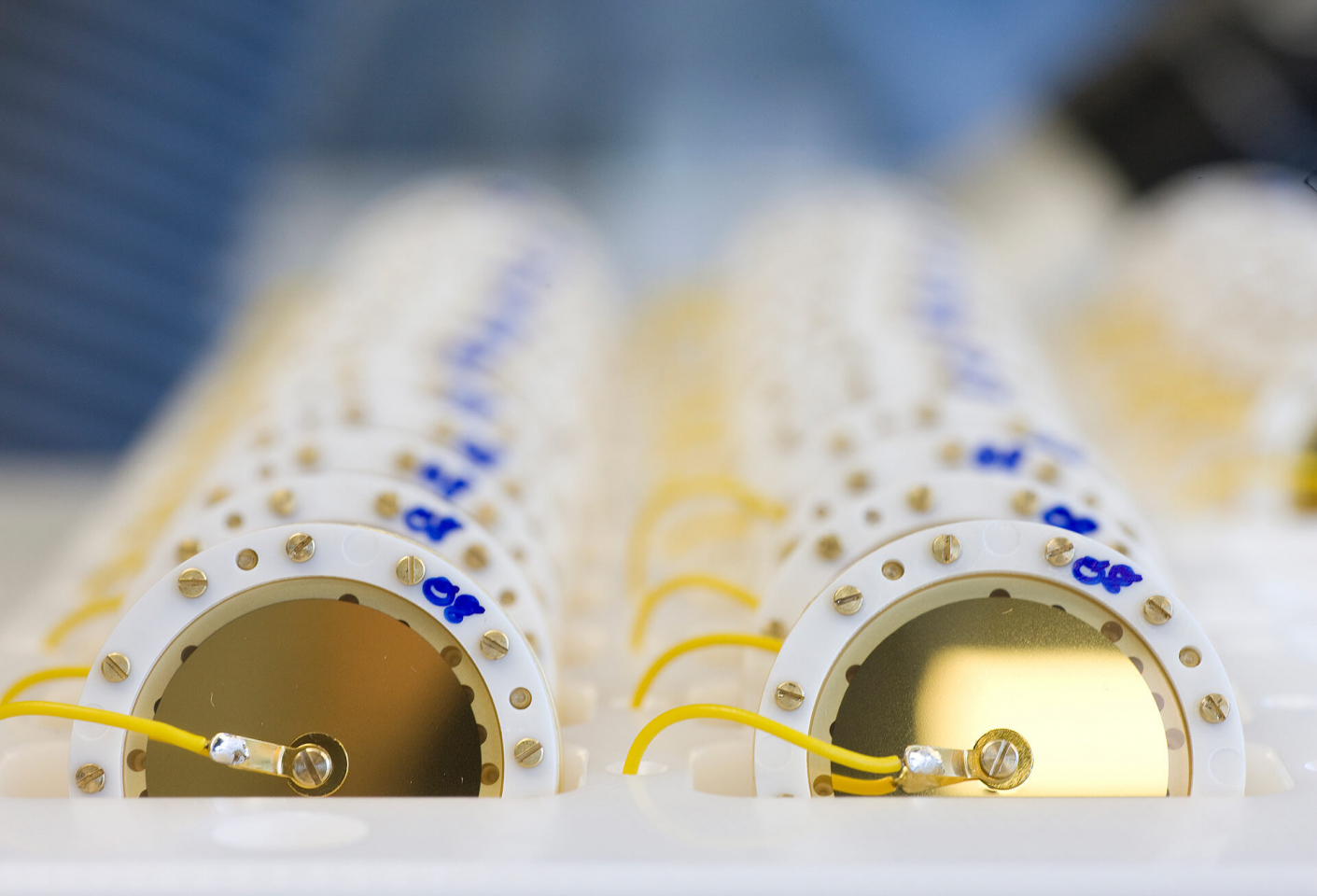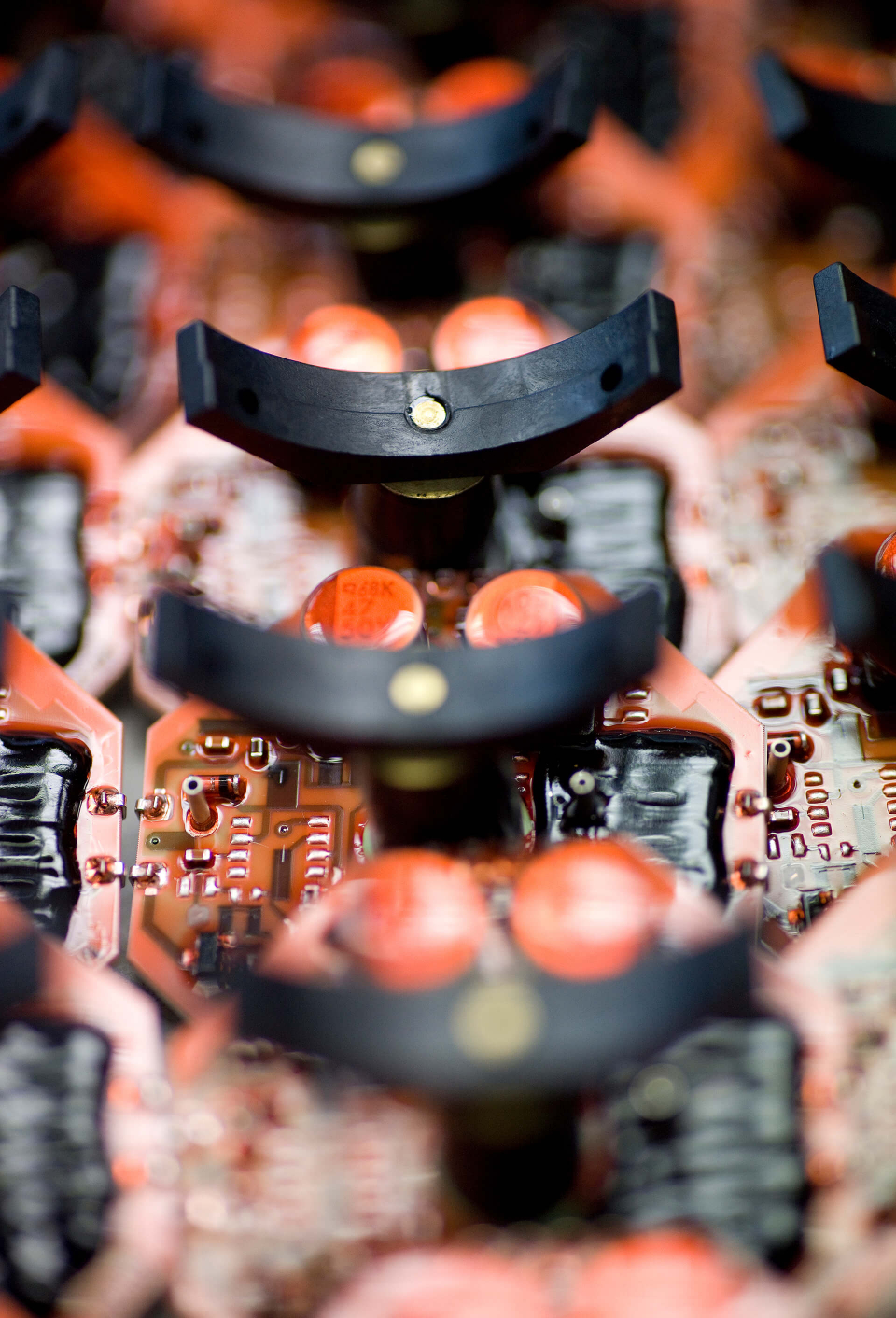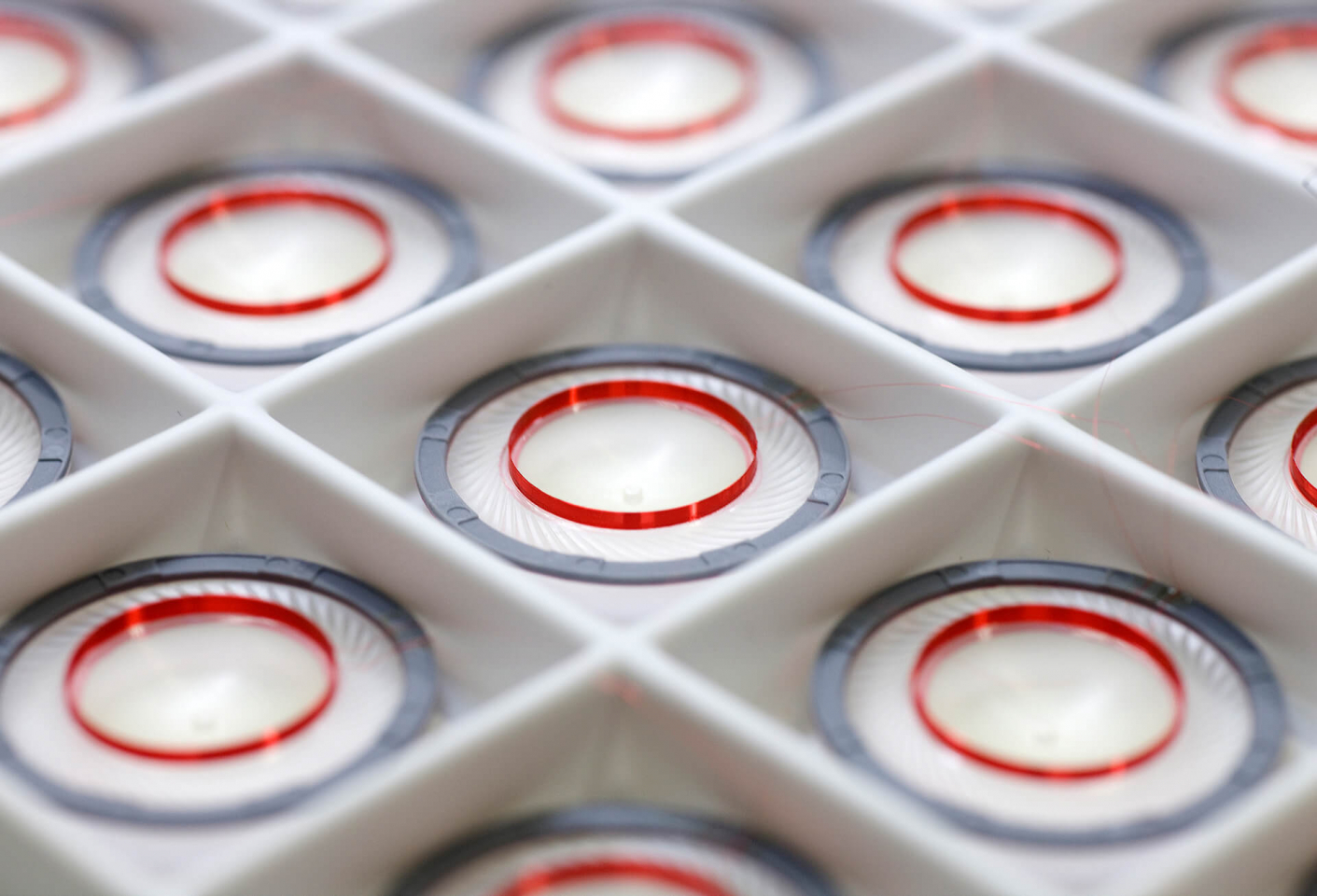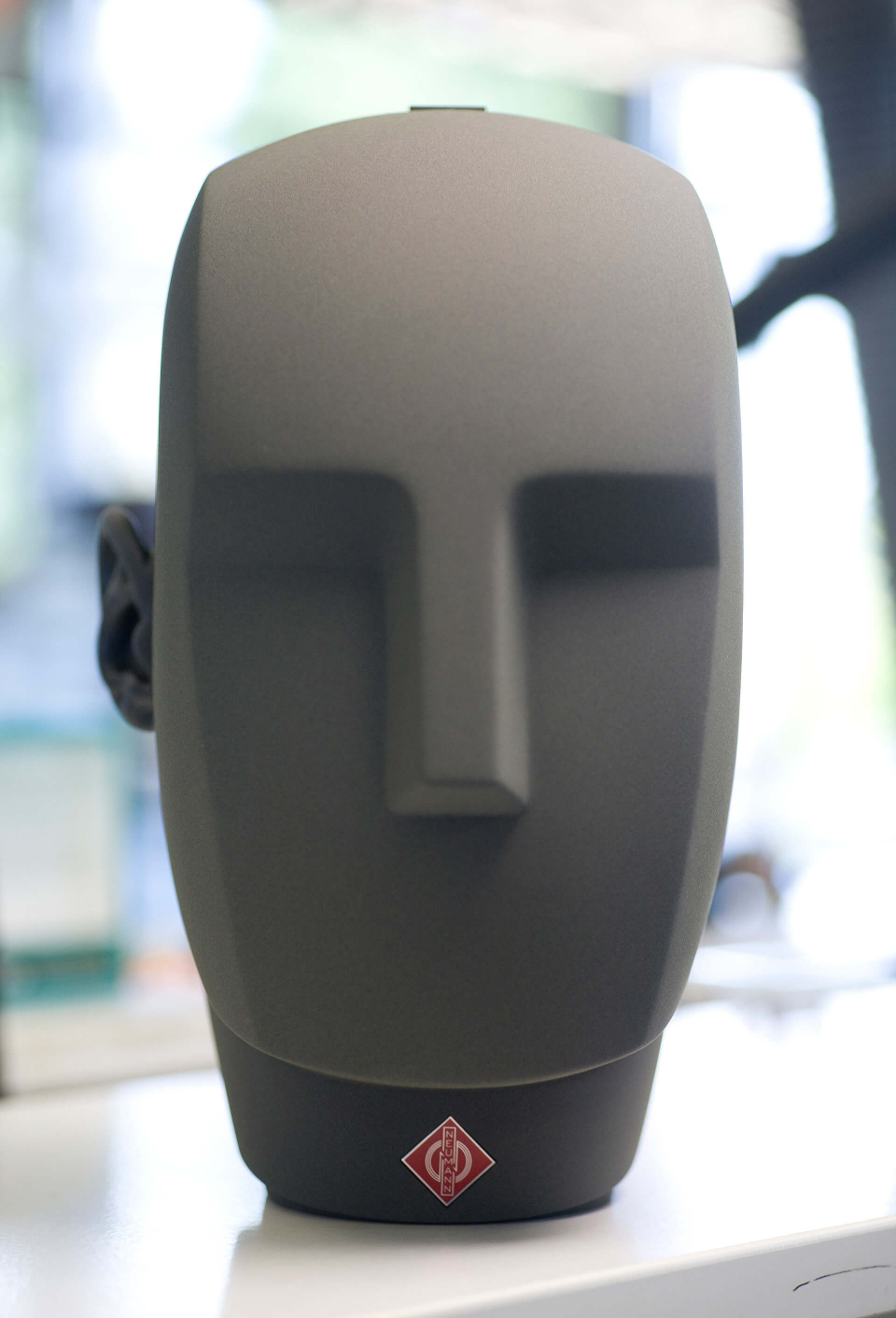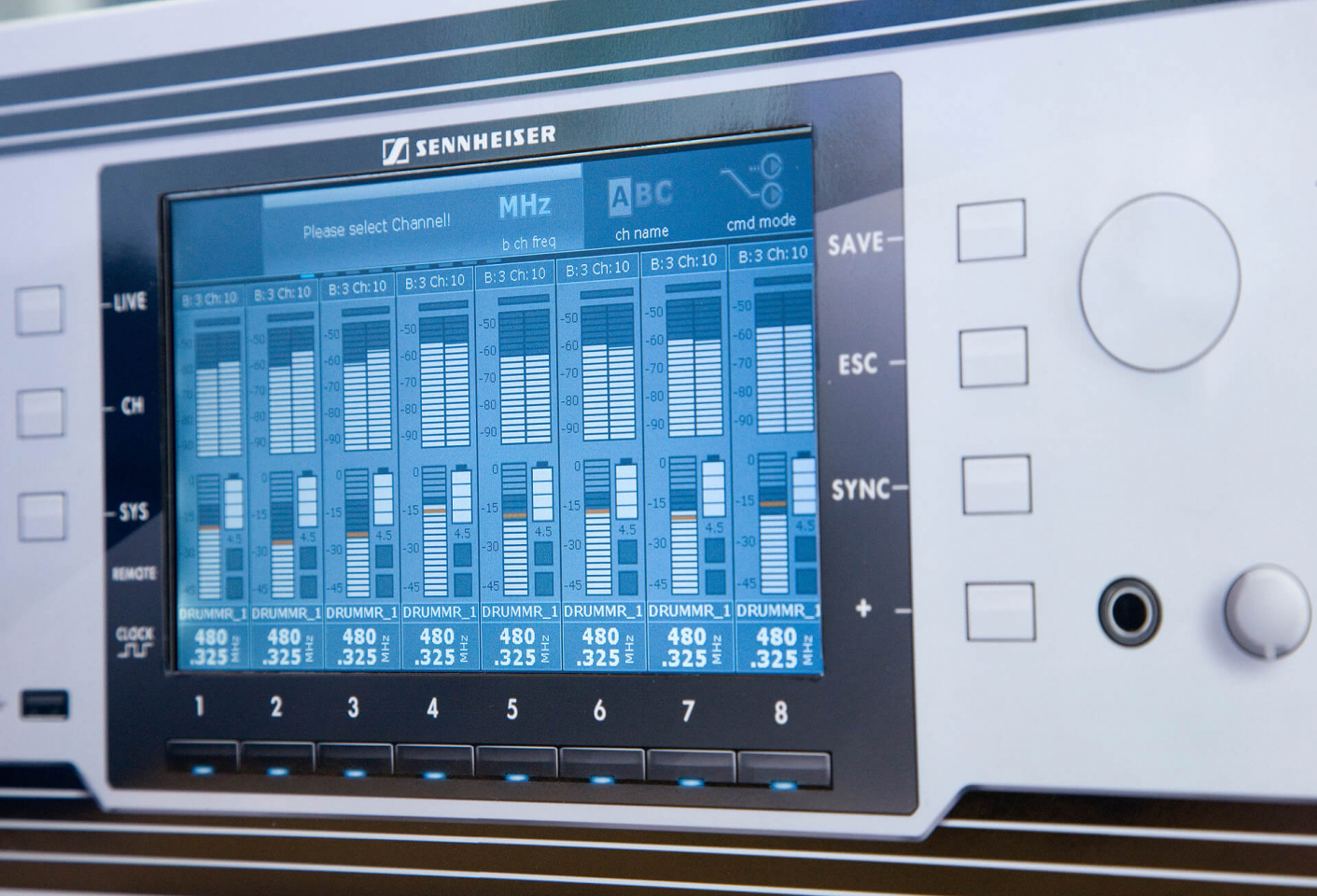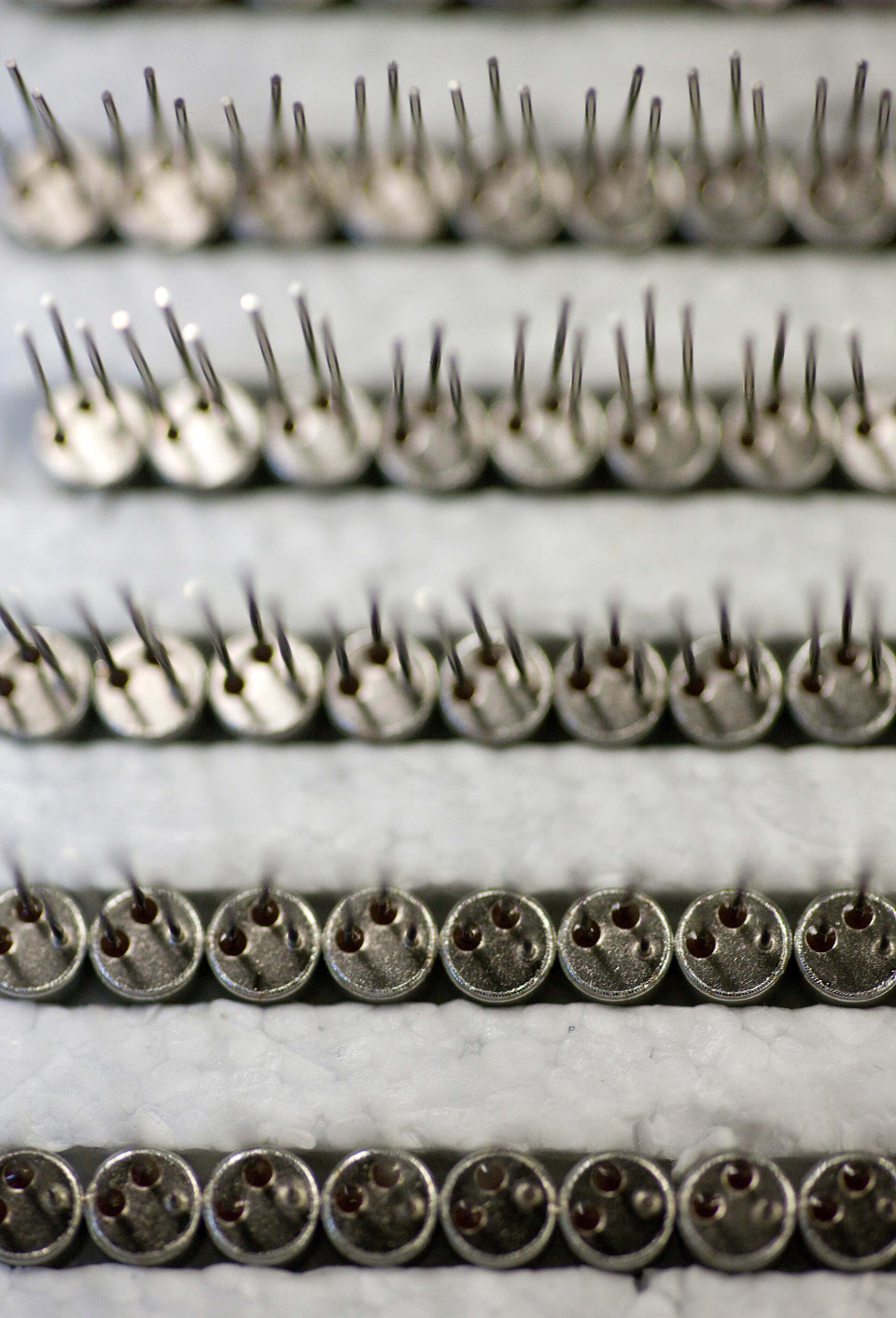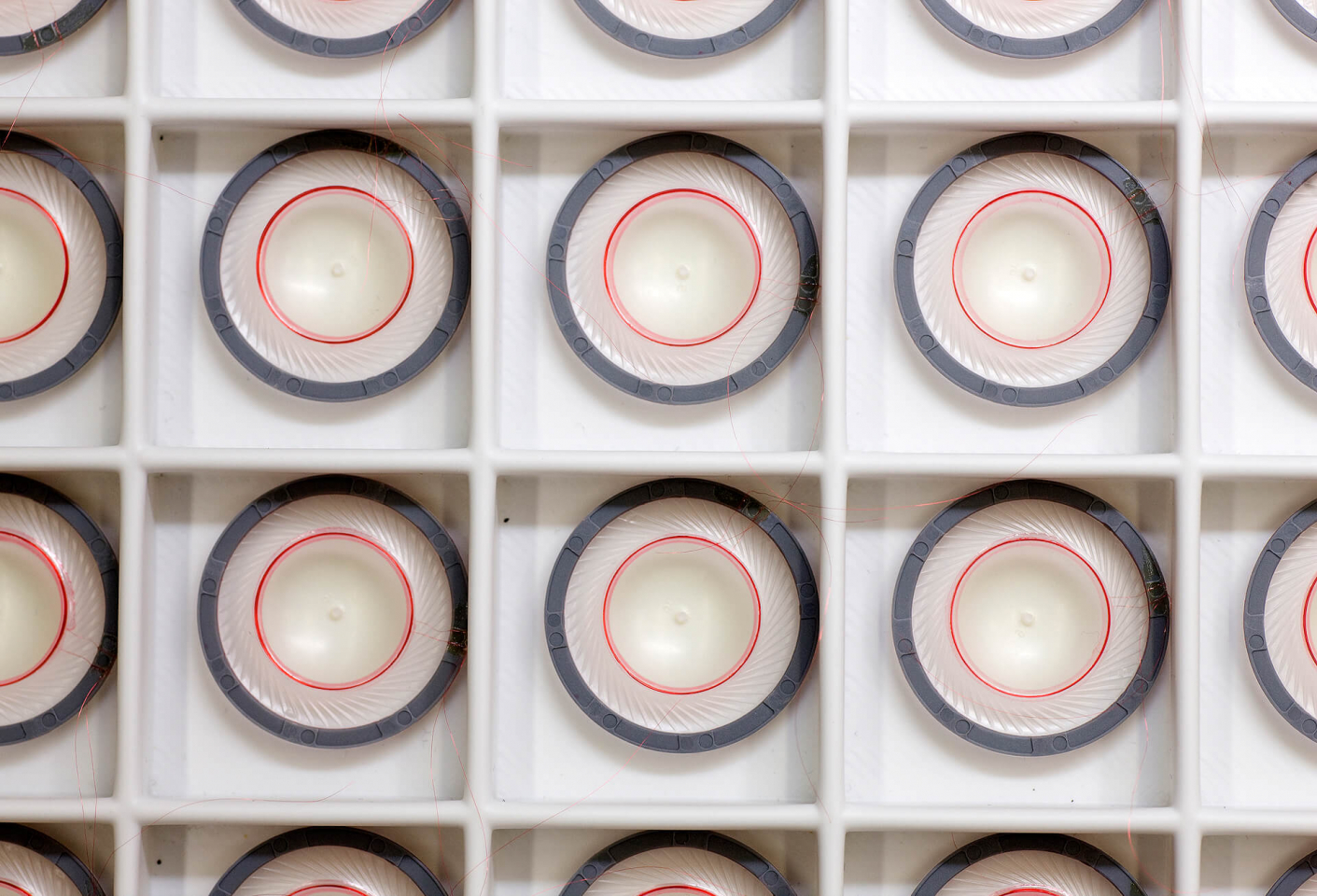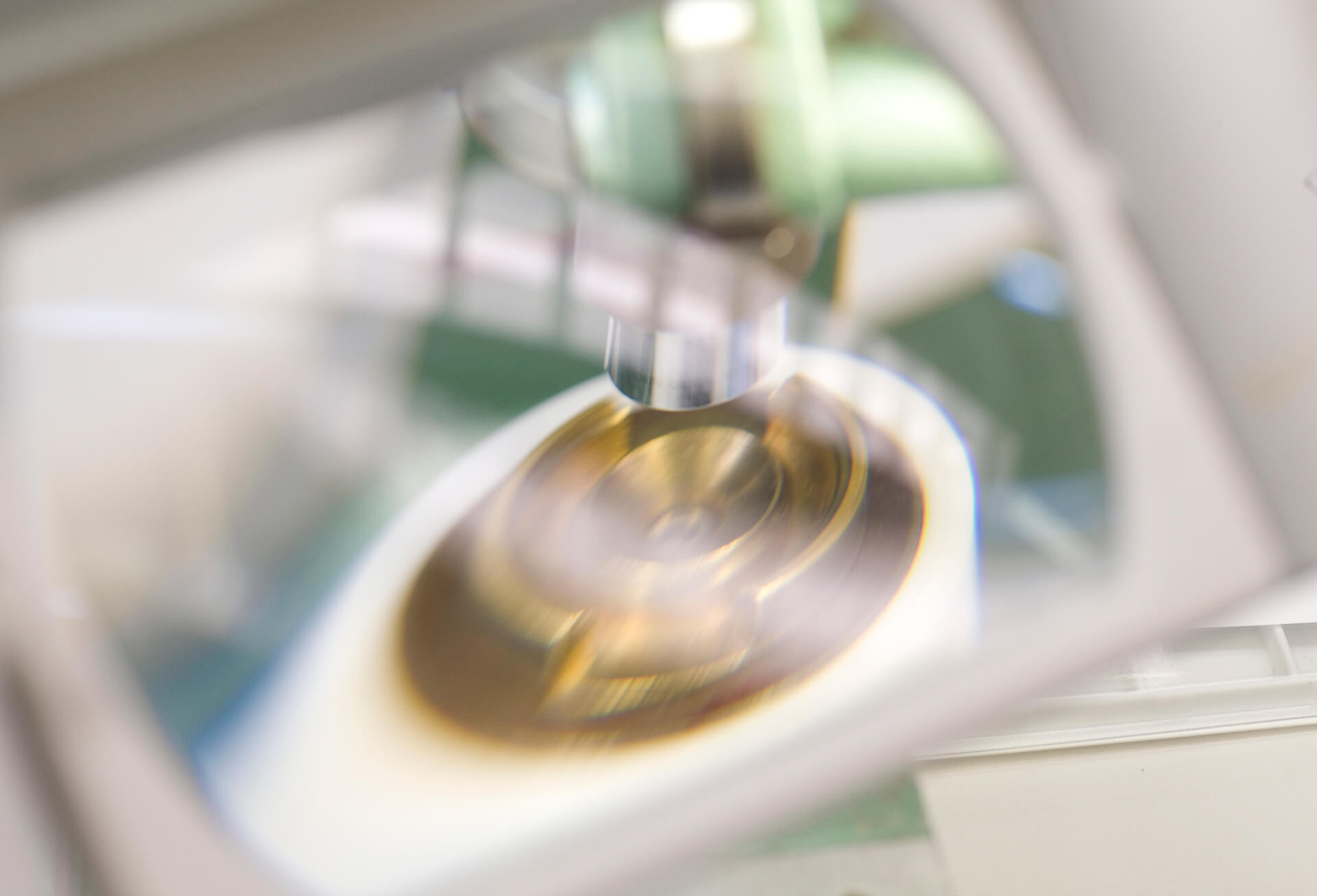
Nominee 2008
Digitales Drahtlos-Mikrofonsystem
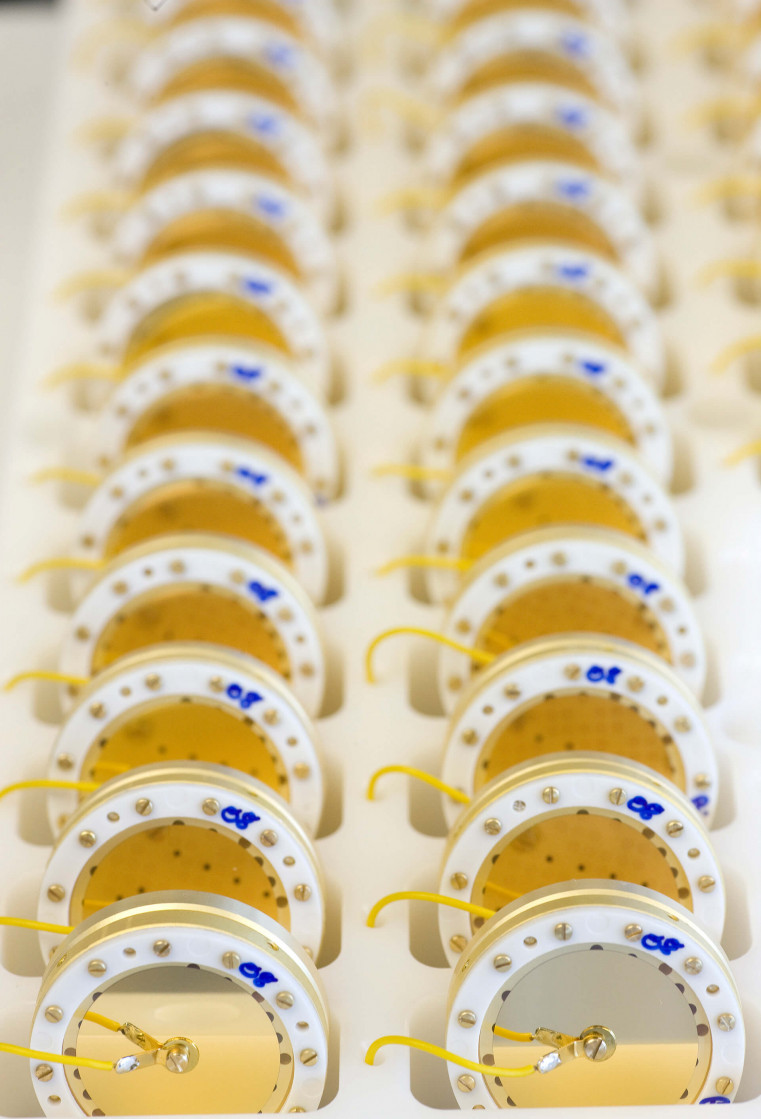
Jörg Sennheiser and Gerrit Buhe succeeded in developing a technology that has the potential to help digitization also for cableless microphones for radio and television studios to make a breakthrough.
Jörg Sennheiser is chairman of the supervisory board of Sennheiser electronic GmbH & Co. KG in Wedemark, Gerrit Buhe is head of Development Professional HF Systems.
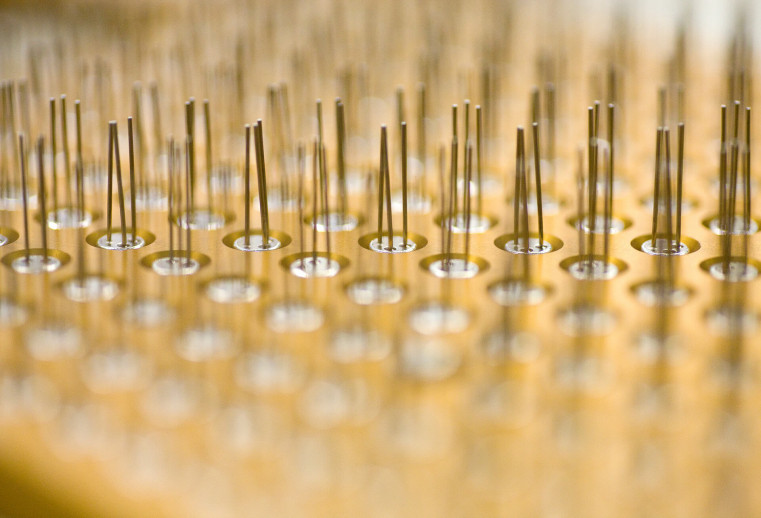
The problem in the past was distorted sound
Whether at the mixer, with effects equipment or sound editing – in the studio or during live recordings, specialists have long been working almost exclusively with digital devices. The exception in the past has still been the microphones: For a couple of years now there are cable microphones available that use digital technology, but wireless microphones have to date all worked in the same conventional analog way. The problems involved in switching these devices to digital technology lies in the incredible amounts of data and the broad frequency range needed to transmit the signals by radio.
more details
Resumes
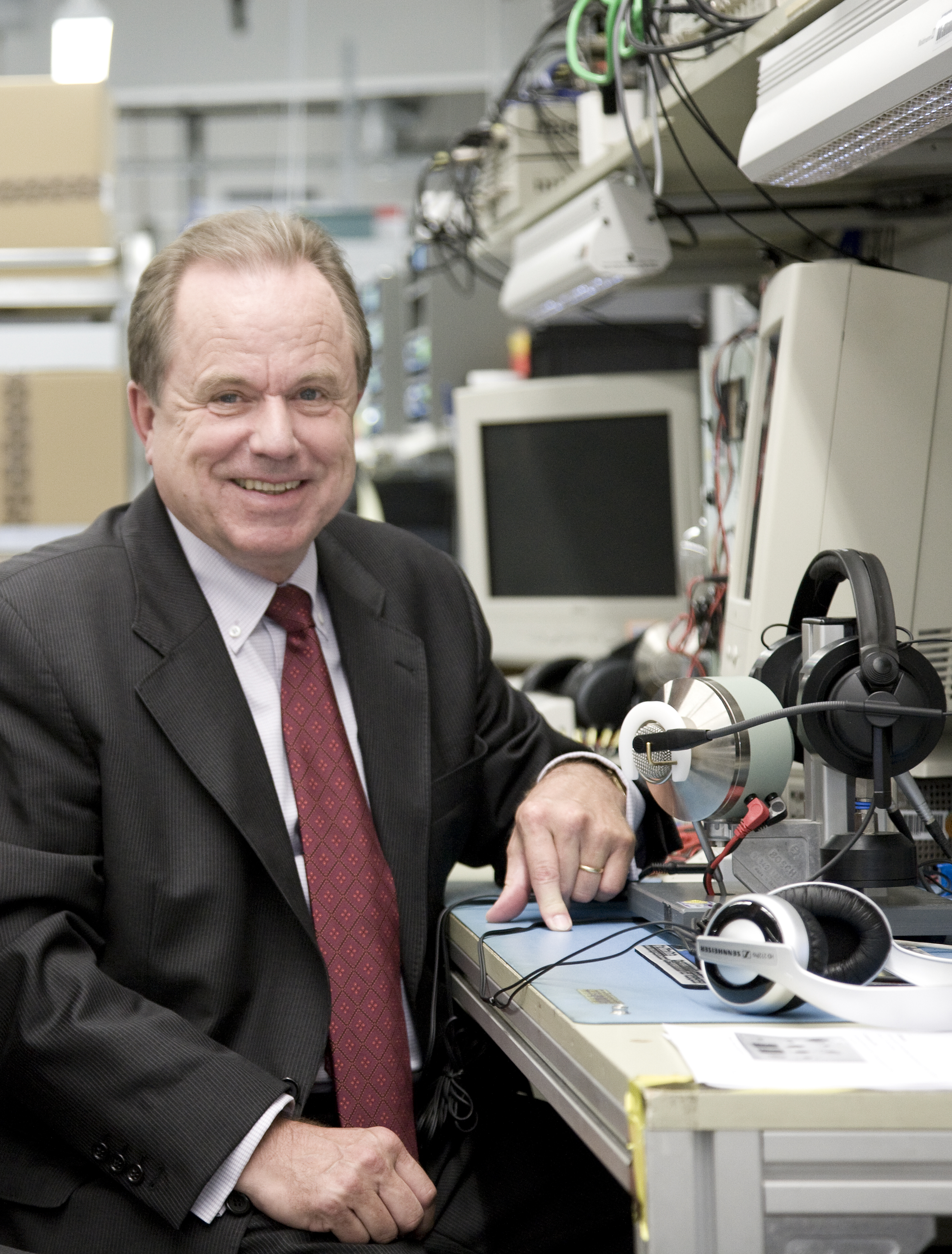
Prof. Dr. sc. techn. Jörg Sennheiser
- 19. 9.1944
- geboren in Bevensen (Uelzen)
- 1964
- Abitur
- 1964 – 1970
- Studium der Elektrotechnik an der Technischen Hochschule Hannover und an der Eidgenössischen Technischen Hochschule Zürich (ETHZ), Zürich, Schweiz
- 1970 – 1973
- Wissenschaftlicher Mitarbeiter und Assistent am Institut für Fernmeldetechnik der ETHZ, Zürich, Schweiz
- 1973
- Promotion an der ETHZ zum Dr. sc. techn.
Thema: „Schallabstrahlung dünner Bleche unterhalb der Grenzfrequenz“
- 1974 – 1975
- Projekt-Ingenieur bei Siemens-Albis AG, Zürich, Schweiz
- 1976 – 1982
- Technischer Leiter bei Sennheiser electronic KG, Wedemark
- seit 1981
- Lehrbeauftragter für die Vorlesung „Elektroakustik I+II“ an der Technischen Universität Hannover
- seit Mai 1982
- Komplementär und Geschäftsführer bei Sennheiser electronic KG, Wedemark
- 1991
- Ernennung zum Honorarprofessor an der Technischen Universität Hannover
- seit April 1996
- Vorsitzender des Aufsichtsrates der Sennheiser electronic GmbH & Co. KG, Wedemark
Ehrungen:
- 1996
- Emmy Award für bahnbrechende Entwicklungen in der HF-Drahtlostechnik
- 1998
- Innovationspreis der deutschen Wirtschaft für das optische Mikrofon
- 1999
- Innovationspreis der deutschen Wirtschaft für den AudioBeam
- 2007
- Praetorius Musikpreis Niedersachsen
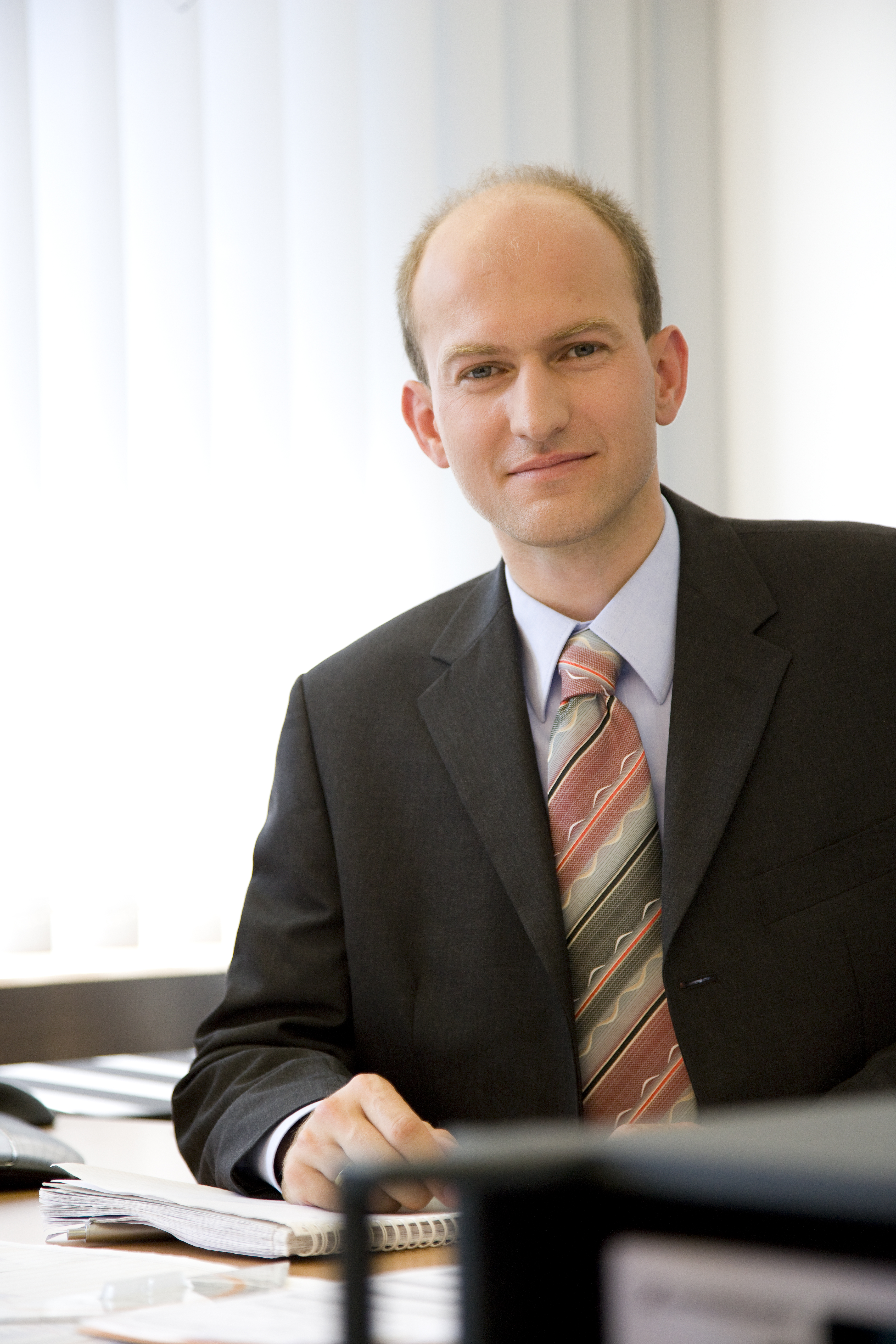
Dipl.-Ing. Gerrit Buhe
- 16.10.1971
- geboren in Rostock
- 1991 – 1995
- Studium der Elektrotechnik, Fachrichtung Nachrichtentechnik, FH Stralsund
- 1993 – 1996
- Entwicklungsingenieur von Sensoren, Ingenieurbüro Rostock
- 1996 – 2001
- Entwicklungsingenieur von Mobilfunk-Basisstationen, Siemens AG, München
- 2001 – 2002
- Entwicklungsingenieur in einer Forschungseinrichtung der Siemens AG mit der Universität Paderborn
- 2002 – 2005
- Entwicklungsingenieur für professionelle Hochfrequenzsysteme
Leiter des Technologieprojekts Mikroport 7000, Sennheiser electronic GmbH & Co. KG, Wedemark - seit 2006
- Leiter Entwicklung Professionelle HF-Systeme, Sennheiser electronic GmbH & Co. KG, Wedemark
Ehrungen:
- 1995
- Ehrenpreis für hervorragende Studienergebnisse 1995 als bester Absolvent des Studienganges Elektrotechnik
Kontakt
Spokesperson
Prof. Dr. sc. techn. Jörg Sennheiser
Aufsichtsratsvorsitzender
Sennheiser electronic GmbH Co. KG
Am Labor 1
30900 Wedemark
Tel.: +49 (0) 5130 / 60 02 12
E-Mail: joerg.sennheiser@sennheiser.com
Web: www.sennheiser.com
Press
Edelgard Marquardt
Teamleader Public Relations
Sennheiser electronic GmbH Co. KG
Am Labor 1
30900 Wedemark
Tel.: +49 (0) 5130 / 60 03 29
Fax: +49 (0) 5130 / 60 02 95
Mobil: +49 (0) 172 / 51 97 329
E-Mail: marquare@sennheiser.com
Web: www.sennheiser.com
A description provided by the institutes and companies regarding their nominated projects
The Innovation – The Digital Wireless Microphone
The audio specialists at Sennheiser have revolutionized the stage and live performance sector: The digital wireless microphone now brings the advantages of digital technology to the marketplace for wireless microphones. 15 years of development work in cooperation with institutes, businesses and universities, and expenditure in excess of 20 million Euros have gone into the technology – which can also accommodate more wireless microphones in a given frequency range.
Microphones are one of the last bastions of analog audio technology. Where mixers, effects equipment, and editing have long gone digital, the microphone continues to resist the victory march of the new technology. Digital cable-model studio microphones have been available for a couple of years, but a digital wireless microphone? Nowhere to be found. The few prototypes already showcased at trade fairs rely on data compression or require immense frequency resources and are thus not suited for use under professional production conditions – particularly when numerous microphones are used at the same time.
“There is a lengthy cognitive process behind our product,” explains Prof. Dr. Jörg Sennheiser. “During development, numerous approaches were rejected because the audio quality was too poor. But, for every approach that was not able to be realized, we derived valuable ideas for pursuing a new path of development.”
Digital without Data Compression
Viewed suspiciously by the “Golden Ears” of sound engineers – and their corresponding eyes – digital microphones had to prove that they were at least as good as their analog brothers and sisters. The only way that was possible was without data compression. Data compression is not only audible, but it also “garbles” the original sound – and any recording quality “thrown away” at the beginning of the production chain cannot be retrieved later. The sound signal has to be available unadulterated.
And as if that weren’t enough of a challenge…
… during development another group of problems came up: the frequencies that wireless microphones used to transmit. In 2004, the European Telecommunication Standard Institute (ETSI) declared that digital wireless microphones would also have to make do with the narrow transmission channel allotted analog wireless microphones – and that despite the incomparably larger data stream. This – and the unprotected frequencies for microphones – meant the end, among other things, for a digital system that Sennheiser was selling together with a partner on the US market.
“The demands continued to rise during the period of development – it was only a good thing that our own demands have been very, very high from the beginning,” says Gerrit Buhe, head of Development of Professional HF Systems at Sennheiser. “With the ETSI requirements, we faced the challenge of crunching the “broad” digital signal with a special technique through the “narrow” stipulated transmission channel of 200 kHz.”
“At the same time, we became involved in the committee work in order to validate the microphone frequencies,” Buhe continues. “We have several employees who do nothing else. When digital television was introduced, everyone thought that frequencies would be freed up and could be sold for other services. What happened was is that someone forgot that wireless microphones used precisely those frequencies – for musicals, theater, live reporting of sports and election events as well as TV program productions. That’s how committee politics got involved in development.”
The Breakthrough
At the development level, the big breakthrough has already happened: “With the newest findings in our briefcase, with refined simulation methods and experiences gained in digital transmission technology, we concluded a cooperation agreement with the TU Hamburg-Harburg in 2002,” relates Prof. Dr. Sennheiser. “Our joint development work ultimately allowed us to produce a system that brilliantly aced the first tests of the “Golden Ears”.”
There was no signal deterioration whatsoever; the system brought the advantages of digital technology to bear: clear, no-noise sound even for weak radio signals and a great range. One of the most important criteria of digital lines was given top marks: the so-called latency – or, to put it colloquially, the “travel time” of the signal through the electronic and numerical signal processor – is minimal.
Prof. Dr. Jörg Sennheiser emphasizes another advantage: “Because high-quality digital transmission systems react very sensitively to so-called non-linearities, our transmitters and receivers are so linear in design that they almost completely avoid the usual intermodulation noise and interference. In conventional systems, these generally occupy valuable ‘transmitting space’ that we can use for even more radio microphones with our new system. You can actually talk about sustainable frequency use.” Gerrit Buhe happily reports, “We are in a position to operate twice as many wireless lines in the given TV channels.”
Compared to the usual radio technology, the receiver of the new Sennheiser system can work with the entire UHF range – which would otherwise require several analog systems. Given this high degree of flexibility, it can be used around the world in the different frequency ranges approved in the respective countries.
The Future
The digital microphone system is protected by international patents. The pilot production is currently undergoing rigorous testing at key customers and “Golden Ears”. And, as soon as it’s been given a thumbs-up, the system will go into series …
The Company
What Sennheiser stands for
Whether on the road or at home, on the stage or behind the DJ’s console, in museums or a concert hall: It is Sennheiser’s declared objective to provide people around the world with a unique sound experience. Over 2,000 employees in over 90 countries work together to honor this promise in every product they introduce.
For more than 60 years, the Sennheiser name stands for new ideas in electroacoustics. The music industry and consumers profit from the innovative recording, transmission, and reproduction systems from this family-owned company. Sennheiser has risen again and again to the challenge to develop creative solutions to meet the requirements and requests of their customers.
Sennheiser headquarters is in Wennebostel, now part of Wedemark. In the 2007 fiscal year, the Sennheiser audio specialists set another sales record: Group turnover topped 395.3m Euros, amounting to 10.9% growth. The positive development is also reflected in the group headcount: In 2007, the number of employees climbed 6.7% to an average of 1,976 employees worldwide, 1099 of them in Germany. Product offerings include headphones, microphones, wireless microphone systems, conference and information systems as well as aviation and audiology products. The Sennheiser Group also includes Georg Neumann (studio microphones), Klein + Hummel Vertriebs- und Entwicklungsgesellschaft (studio monitors and installed sound) as well as the joint venture Sennheiser Communication in Denmark (headsets for PC, office, and call-centers).
Room for Creativity
Pioneering ideas have made Sennheiser famous around the world. These include the invention of the unidirectional microphone in the fifties and the development of the open-back headphones in the sixties. In the seventies there followed infrared transmission technology, in the eighties pioneering innovations in multi-channel wireless transmission. The nineties saw the development of head-based surround sound systems followed by intelligent audio information systems in the new millennium. To ensure that ideas continue to influence Sennheiser’s success in the future, employees have great creative freedom – creativity that has already been honored by two Innovation Prizes from German Industry, the Scientific and Engineering Award, and Emmy and a Grammy.
Sennheiser expands
A commitment to industry in Germany: Company headquarters in Wennebostel is in the process of being expanded to include a production and technology center as well as a customer center. In total, more than 20 million Euros are to be invested by 2011; construction is due to start in November 2008. “Strengthening the Wedemark site will support the positive development of the global Sennheiser Group and increase our customer orientation.” Of that Prof. Dr. Jörg Sennheiser is sure. Volker Bartels, spokesman for the management, agrees: “The expansion of company headquarters is a testimony to the commitment of the Sennheiser family to Wennebostel as an industrial base.”
The right to nominate outstanding achievements for the German Future Award is incumbent on leading German institutions in Science and Industry as well as foundations.
The Project “Professional Digital Wireless Microphone System” was nominated by “AiF - Arbeitsgemeinschaft industrieller Forschungsvereinigungen” (German Federation of Industrial Research Associations).
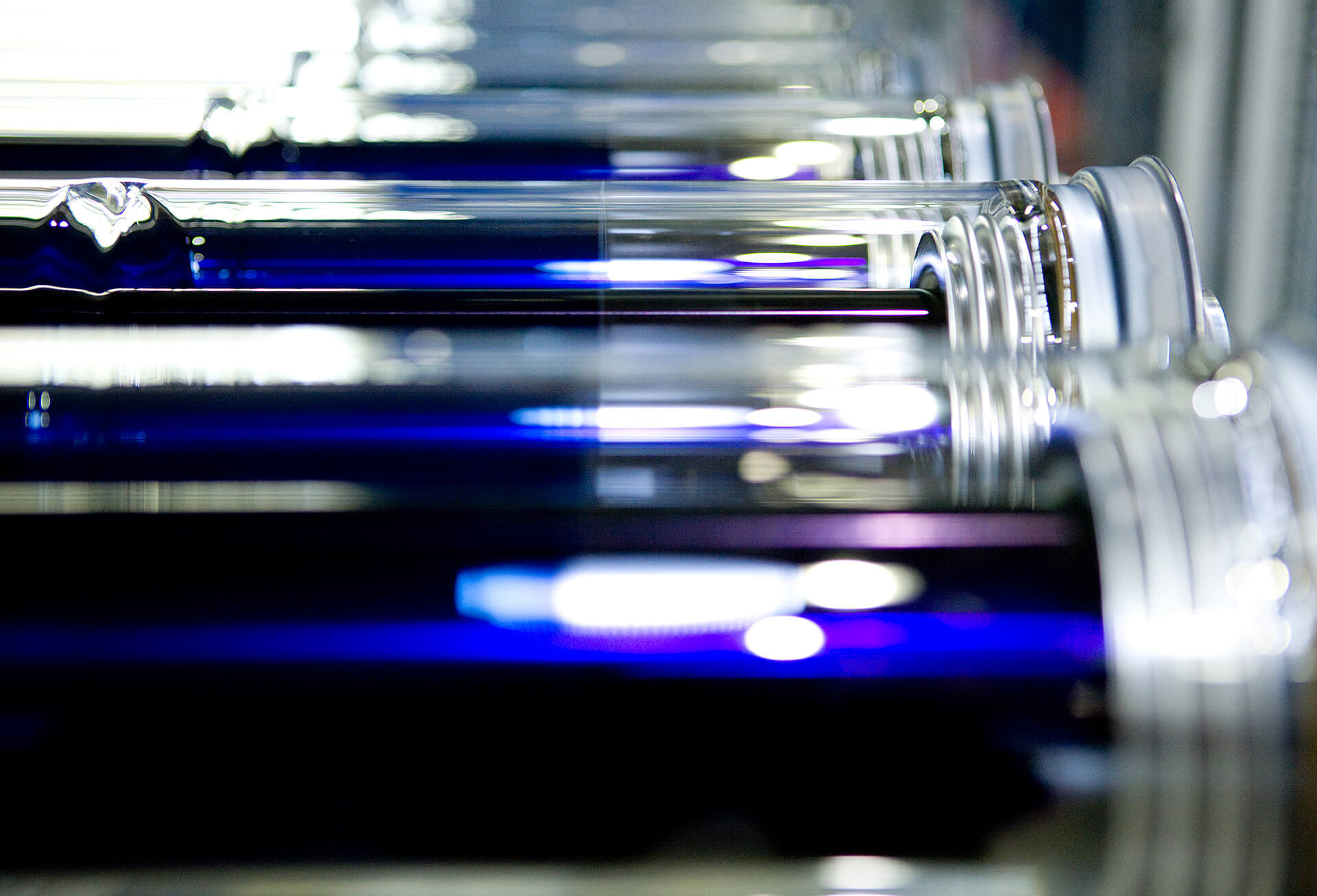

 Gebärdensprache
Gebärdensprache
 Leichte Sprache
Leichte Sprache


